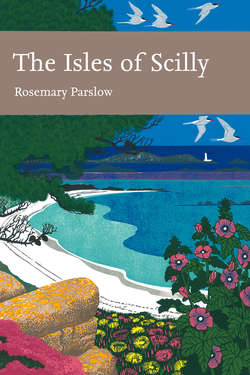Читать книгу The Isles of Scilly - Rosemary Parslow - Страница 45
CHAPTER 5 St Mary’s
ОглавлениеNot a tree to be seen, but there are granite piles on the coast such as I never saw before, and furze-covered hills with larks soaring and singing above them.
George Eliot (1857)
ST MARY’S IS THE largest of the Isles of Scilly at 649 hectares (above MHWS) and approximately 4km x 3km from coast to coast. Only on St Mary’s is there enough metalled road to merit any kind of bus service or any traffic as such. There are just over seventeen kilometres of road that link most of the communities on St Mary’s. Besides being busy with local and farm traffic, the sightseeing buses, the hire bikes and the taxi cabs all use the road to provide a service for the holidaymakers who flock to the island in the summer (bringing your own car to Scilly is not advised).
Away from the sea the interior of the island is gently undulating with a slightly more ‘mainland’ feel due to a largely cultivated landscape with small hamlets scattered among the farms. Many of the fields are arable and often have interesting weed floras, usually including some of the arable plants now becoming increasingly rare in Britain. The field boundaries, consisting of pine windbreaks, evergreen and elm ‘fences’ (hedges), and stone ‘hedges’, all have their particular natural history and landscape features. The unfarmed land, comprising grassland, wetlands and heath, is mostly around the coast. Also around the coastal areas are spectacular rocky headlands, cliffs, sandy bays and dunes. The ‘main’ road forms a figure of eight round the middle of the island, with a few other small sections of made-up road linking the hamlets. Farmland away from the road is generally inaccessible to the general public except were served by footpaths. There is a coastal path round the island and a system of footpaths that mostly link the roads with the coast, or access the nature reserves.
